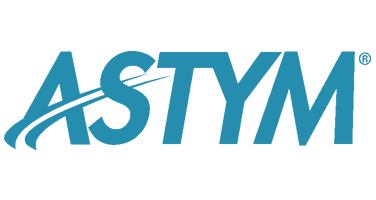
07 Nov Hamstring Strain and Injury: Advice From The Experts, Part I
Those of you who suffer from chronic hamstring strains know how frustrating this recurrent injury can be. Hamstring strains and injuries typically occur with high-speed activities such as sprinting, soccer, or tennis. As physical therapists, we treat an increased number of hamstring strains as recreational league softball gets into full swing. Many “weekend warrior” athletes are not adequately conditioned or prepared for the quick starts and change of directions required for these sports. Minor muscle strains may resolve with rest, gentle pain-free movement, and ice over a couple weeks. More serious hamstring strains may cause swelling or bruising and can take several weeks to months to resolve. Strains that occur where the hamstring muscle attaches at the “sit bone” tend to take longer to resolve than strains that occur in the muscle belly.
If a muscle strain is not treated appropriately there is greater chance for another strain to occur leading to a chronic injury. The hamstring may not be painful with typical everyday activities, but can be aggravated as the athlete returns to running or sports requiring quick movements. Residual scar tissue at the injury site and persistent muscle weakness are two common reasons for the increased re-injury rate. As the muscle remodels itself following a strain, scar tissue forms at the injury site. Early, pain free movement can help reduce the formation of scar tissue. However, excessive hamstring stretching should be avoided as it can result in dense scar tissue formation. As the muscle continues to heal and pain decreases, specific strengthening exercises called eccentric exercises should be included in the rehabilitation program. Eccentric exercise involves slowly straightening your knee against resistance (working your hamstring muscles) so that the muscle is engaged while it is lengthening. Your physical therapist can show you how to perform these exercises. Part II of this entry will provide more detail on rehabilitation exercises following a hamstring strain and tips for preventing hamstring injuries.
Even if you have suffered from a chronic hamstring strain for years, there are pulled hamstring treatments that can reduce the residual scar tissue, improve your strength, and get you back to full activity pain-free. The scar tissue that forms around the injured muscle can create a knot in the muscle known as a trigger point. While massage can effectively release these trigger points, a technique called trigger point dry needling can be more effective because the muscle can be directly treated at a deeper level by penetrating the skin with a fine needle. Trigger point dry needling uses fine filament type needles to release the trigger points in the muscle.
The scar tissue can be effectively treated with Astym treatment. With Astym your therapist will use instruments instead of her hands to engage the scar tissue and induce its resorption by the body. Also, Astym will help regenerate any degenerated soft tissues in the area and stimulate the muscle and/or tendon to remodel itself. A key part of the remodeling process is to apply controlled stress to the healing tissue with specific stretching and strengthening exercises. Astym and controlled stress will help the muscle remodel and become stronger, and help prevent scar tissue from forming. Your physical therapist can help you determine the appropriate exercise to stress the muscle enough to make it stronger while not causing damage. So remember the good news if you continue to be plagued by a chronic hamstring injury… you can get back to the activities you love pain-free!
Dr. Tim Flynn and Dr. Terry Gebhardt are physical therapists and owners of Colorado Physical Therapy Specialists in Fort Collins, Colorado; you can visit their clinic’s website here.
Meet today’s guest bloggers:

Dr. Timothy W. Flynn, PT, PhD
Dr. Flynn is board certified in Orthopaedic Physical Therapy (OCS), a Fellow of the American Academy of Orthopaedic Manual Physical Therapists (FAAOMPT), and a frequent research presenter at state, national, and international meetings. Dr. Flynn is widely published including 5 textbooks, 6 book chapters, over 50 peer-reviewed manuscripts on orthopaedics, biomechanics, and manual therapy issues. He was the editor and author of The Thoracic Spine and Ribcage – Musculoskeletal Evaluation & Treatment and The Users’ Guides to the Musculoskeletal Examination, and the author of 3 educational CD-ROMs on Orthopaedic Manual Physical Therapy. Dr. Flynn has received numerous research grants. Awards include the James A. Gould Excellence in Teaching Orthopaedic Physical Therapy, the Steven J. Rose Excellence in Research (twice), the AAOMPT Outstanding Research Award (twice), and the Distinguished Alumnus- Marquette University Program in Physical Therapy. Dr. Flynn continues to maintain an active research agenda in the areas of spinal and extremity manipulation, low back disorders, characterization of spinal instability, and the development of clinical prediction rules.
Dr. Flynn is an expert clinician who is dedicated to providing the highest quality care possible. His primary clientele is made up of individuals suffering from low back pain, chronic spinal disorders, failed back surgeries, and chronic pain disorders. Dr. Flynn’s clinical expertise is frequently sought by national and international clients. He is on the executive board of Evidence in Motion an education and practice consultation company which passionately promotes a culture of evidence-based practice within the physical therapy profession. Dr. Flynn is the immediate past President of the American Academy of Orthopaedic Manual Physical Therapists, an Associate Editor for the Journal of Orthopaedic & Sports Physical Therapy (JOSPT), and editorial board member of Manual Therapy. He is a Distinguished Professor of Physical Therapy at Rocky Mountain University of Health Professions where he teaches professional and post-professional students in the area of musculoskeletal management, advanced manipulation skills, and evidence-based practice.

Dr. Terry Gebhardt, PT, DPT
Dr. Gebhardt completed his Master of Physical Therapy at the U.S. Army-Baylor University Graduate Program in 1998. During Dr. Gebhardt’s 7 years of physical therapy practice in the Army he specialized in treating a broad range of musculoskeletal injuries. He has worked extensively with injury prevention initiatives and has been a leader in the development of training programs designed to maximize fitness while preventing injury. Dr. Gebhardt relocated to Colorado in 2004 to complete his Doctorate of Physical Therapy degree and Fellowship in Manual Therapy at Regis University. His areas of clinical expertise and interest include spine and sports rehabilitation where he incorporates his passion for fitness with physical therapy.
Dr. Gebhardt is an avid back country skier and ultramarathoner. He is a member of the American Physical Therapy Association (APTA), American Academy of Orthopaedic Manual Physical Therapists (AAOMPT) and a Certified Strength and Conditioning Specialist (CSCS). He has also published research in the Journal of Orthopaedic and Sports Physical Therapy and is currently active in clinical research.




